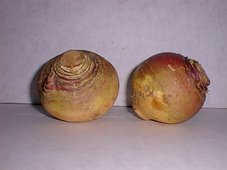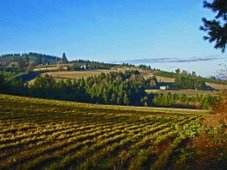 Is there a gene that creates a craving for rutabagas in humans? A major study on the rutabaga gene in fruit flies (Drosophila pax) suggests that may indeed be the case:
Is there a gene that creates a craving for rutabagas in humans? A major study on the rutabaga gene in fruit flies (Drosophila pax) suggests that may indeed be the case: Rutabaga-encoded adenyle cyclase has also been mapped in the human genome, so the same lust for rutabagas may occur in people, as suggested by ARSI's empirical data. Stay tuned for more information from our labs about this exciting area of scientific inquiry, which led to a Nobel Prize in 1995."[R]utabaga encodes a calmodulin dependent adenyl cyclase that converts ATP to cyclic AMP. cAMP is a major signal transducer of the cell, and its creation and destruction is involved in just about every response of the cell to environmental changes. Calmodulin is a protein that binds the Ca++ ion, sensing its cellular concentration and interacting with the rutabaga encoded adenyl cyclase to activate adenyl cyclase mediated enzymatic conversion of ATP into cAMP." From The Interactive Fly © 1995, 1996 Thomas B. Brody, Ph.D.
PHOTO: A fruit fly sips rutabaga nectar in an ARSI experiment.





No comments:
Post a Comment